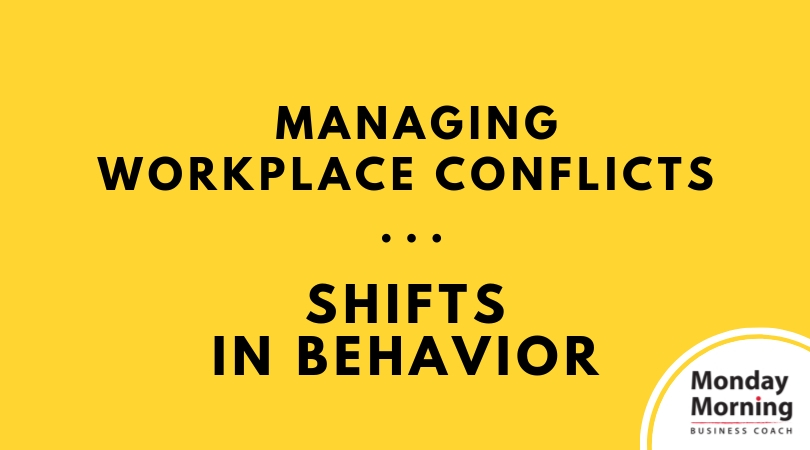Last week, in our post, Managing Workplace Conflicts: Shifts in Focus, we started with “Let’s be honest, if an organization has more than one person, it’s likely there will be conflict and tension.”
A number of you reached out to us to say that just that one sentence had been powerful as it reminded you that you, your team, and your organization are not dysfunctional because you have conflict. Conflict is a part of being human!
It’s so helpful to normalize just how messy all of us are. As we said, “As humans, we’re navigating the organizational agenda, our professional agenda, others’ professional agendas, our personal agenda, others’ personal agendas, etc.”
The shifts in focus we discussed last week can help people make the shift from conflict to problem solving.
This week, we’re sharing some shifts in behaviors that will help you individually, or you as a manager help others become more effective when tensions rise.
Don’t take it personally. Yes, this is easier said than done!
- It’s important to remember that most of the time you’re experiencing tension with someone else, it’s because they’re wrapped up in their own head about what’s going on. They’re afraid or worried about looking bad, and so you get caught up in that fear.
- It’s important to take a moment and Pause.
Pause, and ask yourself, “Is what I am about to say or do in alignment with my goals?” Reacting is not helpful.
- Pausing lets you respond with thoughtfulness and professionalism.
- Pausing to get clear is critical in today’s fast-moving business world. We need time to collect our thoughts and ensure that we’re moving forward responsibly and not with reactivity.
- To do that you need to Listen.
Listen deeply, stay curious, and ask for clarification. Your job is to try and understand what others are experiencing so that you can respond appropriately to them.
- After you’ve listened fully and understand the perspective of the other person you can then share your experience.
Name and deal with feelings. It’s fine to describe your experience of anger and frustration, but acting that anger out by being mean, insulting or disrespectful is not.
- Use I statements.
- People feel what they feel, but in the workplace the expectation is that they learn from their feelings (and the data those feeling provide) and then move professionally forward together.
Be attentive and respectful in your non-verbal communication.
- People believe non-verbal cues more than verbal ones.
- If your words are collaborative, but your arms are crossed and you’re scowling, you’re going to undo all you have done to defuse the conversation.
Focus on the future. Most people are conflict avoidant; so, like you, they want to move to a more comfortable and collaborative place.
- Focusing on the future allows you to shift from current tension and think about what you can do together going forward.
We recently worked with a mid-level manager who was stressed out due to the amount of conflict in her team. Her stance (until now) had been to ignore it, which was only making it worse.
By tolerating the behaviors, she was inadvertently supporting them. So, we coached her to be more comfortable with intervening in the conflict.
She needed to distance herself from it so that she wasn’t taking it so personally, and then she needed to listen deeply to what was going on within her team.
By teaching her behaviors that she could utilize when she felt stuck in her own fear and anger, she was able to interrupt the cycle of unproductive conflict that was distracting her team from the real work at hand.
This week, take some time to familiarize yourself with the behaviors listed above and see if you can find opportunities to practice some of them so that they’re not foreign to you when you need them in a real conflict situation.
Stay tuned for next week’s post where we’ll talk about how you can use conflict to increase innovation.
into action to manage conflict at work,
contact us today about our Executive Coaching.

